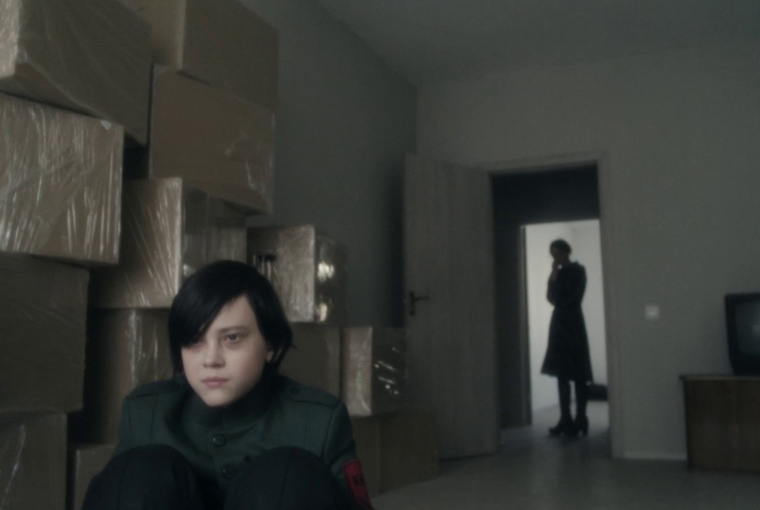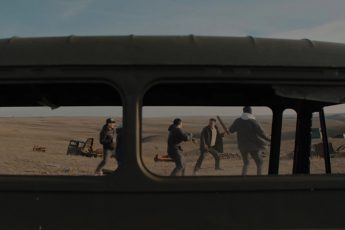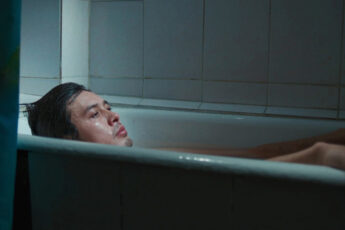The Ritual of Evil
Adilkhan Yerzhanov’s Cadet (Kadet, 2024)
Vol. 157 (September 2025) by Margarita Kirilkina
The film Cadet by Kazakh director Adilkhan Yerzhanov reflects a contemporary reality where evil seems all-consuming. Like many of us today, one of the film’s protagonists – single mother Alina – is haunted by the question: if evil is all around us, then where can there be a place for the good?
Alina (Anna Starchenko) and her teenage son Serik (Serik Sharipov) move to a small town in Kazakhstan. She gets a job as a history teacher at a military school, and Serik starts here as a cadet. The black-and-white photographs of soldiers on the school’s walls set the tone – everything that unfolds next seems trapped within these frozen images, images whose static temporality the characters will try to disrupt through various rituals: familial, psychotherapeutic, religious, and even magical. The school building itself is situated in an inaccessible fortress in the mountains, seemingly detached from the rest of the world. It is a timeless, impenetrable construct.
Serik stands out from the other students. They are all alike – future soldiers, fully integrated into a militaristic, masculine system. Their shared value is legitimized violence, which binds them into a collective identity expressed through both their regulated interactions with their peers and their hostility toward difference. Serik is entirely other, and for that, war is declared on him, which is symbolically illustrated in a basketball game where he is excluded from the team. Not just the boys, but also the school director and even Serik’s own mother Alina continually remind him of how alien he is to this masculine collective. Interestingly, Alina is the film’s only female character – constantly submissive vis-à-vis the male-dominated society, even accepting instructions about how she should look, such as when the principal tells her to tie her hair back and remove her makeup. The cinematic space, too, belongs entirely to the male world.
In this masculine world, Serik is expected to undergo a ritual of initiation – a transformation from his sensitive, feminine nature into a masculine essence oriented toward violence, a transition the school principal repeatedly insists upon. He is expected to detach himself from his mother’s feminine influence and conform to the masculine ideal imposed by society. The ultimate test involves stabbing a knife into a dead pig’s eye – a challenge Serik finds unbearable, especially as he fears sharp objects and can’t even cut his own hair, the key marker of his feminine appearance.
To complete the initiation, supernatural forces intervene. These otherworldly elements, in fact, dominate the visual field of the film: characters are often pushed into the corners of the frame, leaving unsettling empty spaces, and the frequent use of superimposed images turns the characters into semi-transparent phantoms hovering between reality and another realm. The entire film unfolds in a kind of liminal, magical space – a place where the characters are stuck, unable to reach the moment of transformation. The rituals they are meant to perform are intended to secure their place in society, so that they move from chaos to order. However, the order they are being asked to join is one constructed by forces of evil.
Only one character – a woman, symbolizing opposition to this male world – understands this. She chooses to forever remain in the transitional space, rather than enter a world of absolute evil, an evil transmitted from generation to generation. Serik is a victim of this order – the son of a general, the highest embodiment of evil in this militaristic world. And only by destroying itself can this evil vanish. This is the meaning behind the repeated symbolic suicides of the cadets that begin haunting the military school as the film progresses.




Leave a Comment